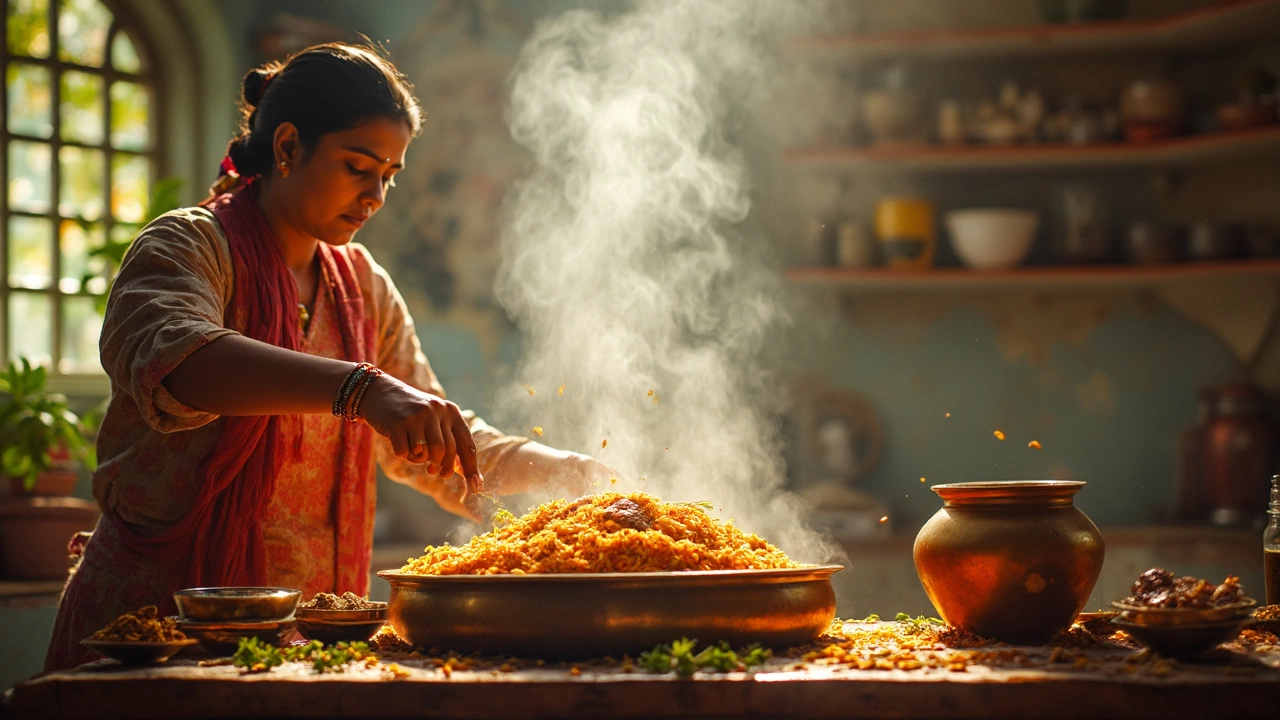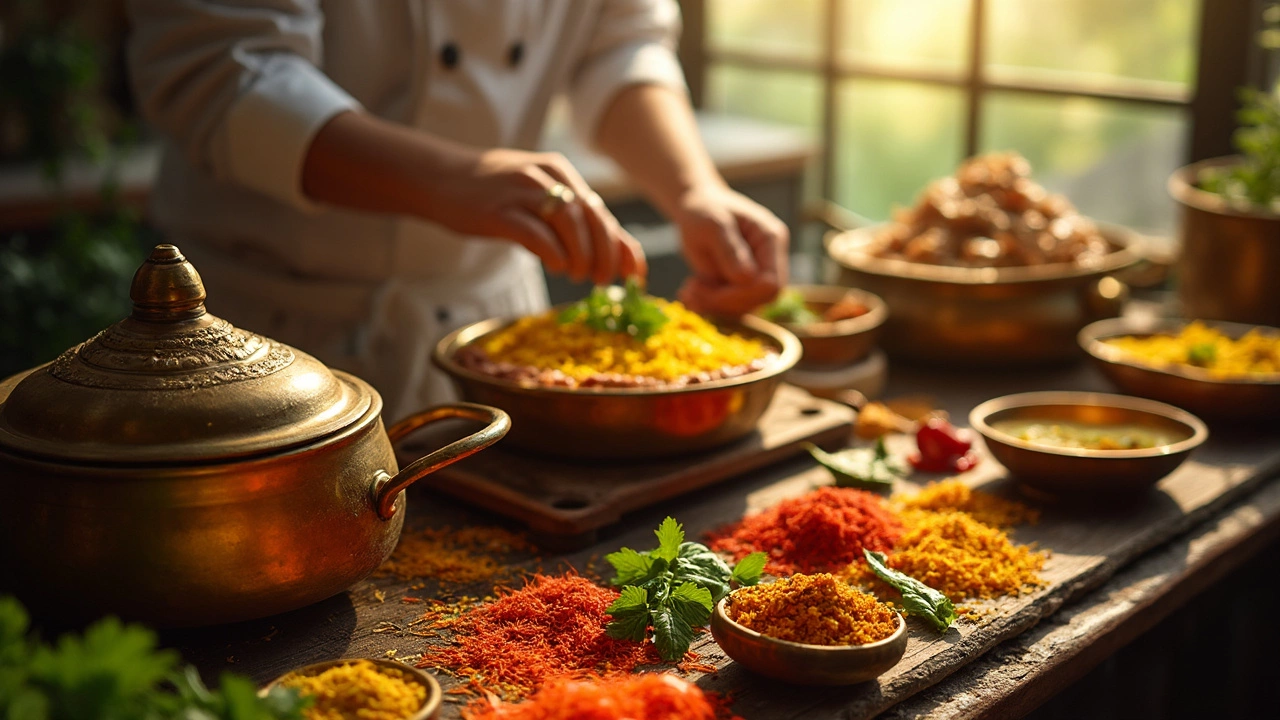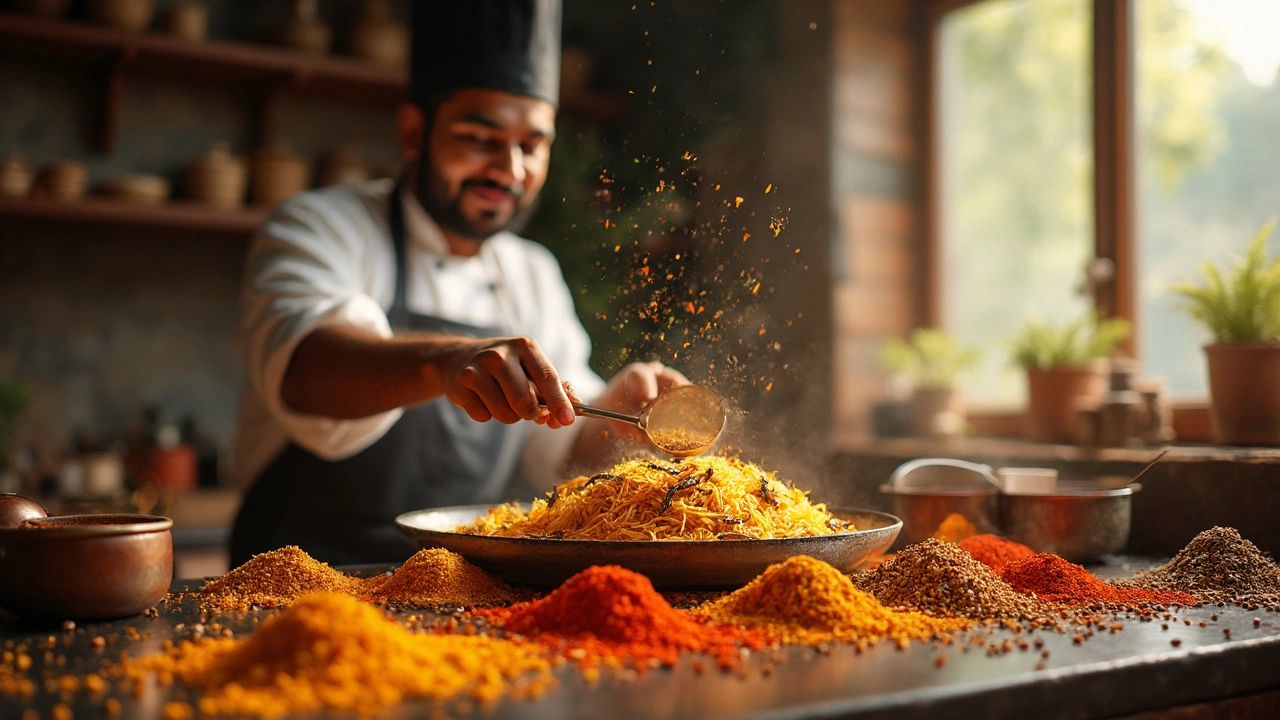Biryani Recipe: Master the Art of Aromatic Layered Rice
When working with Biryani, a fragrant, layered rice dish that blends marinated meat or vegetables with seasoned basmati. Also known as rice biryani, it brings together regional spices, cooking techniques, and cultural celebrations. Biryani recipe enthusiasts often wonder why it feels both simple and complex at once. The answer lies in the three core actions: soaking rice, building spice layers, and slow‑steaming to let flavors meld. This trio creates the signature taste that makes biryani a centerpiece at festivals and family feasts.
One of the most overlooked tricks is using Lemon, a sour fruit that brightens the palate and helps keep the rice grains separate. Lemon’s acidity balances the richness of ghee and meat, and it also slows down starch release, which prevents the rice from turning mushy. Add a splash of lemon juice to the final steaming stage, and you’ll notice a lift in aroma that feels almost magical. The science is simple: acid reduces surface tension, allowing steam to circulate evenly, which in turn makes each grain fluffier.
The heart of any biryani is its Spices, a blend of whole and ground aromatics like cardamom, clove, cinnamon, and garam masala. These spices create layers of flavor that evolve as the dish cooks. Toast whole spices first to unlock essential oils, then grind them fresh for maximum punch. A good rule of thumb: use three to four whole spices per cup of rice, and finish with a teaspoon of ground masala for depth. This balance ensures the dish is neither bland nor overpoweringly hot.
Choosing the right Rice, preferably long‑grain basmati that is aged for at least a year is crucial. Basmati’s low amylopectin content keeps grains distinct after steaming. Rinse the rice until the water runs clear, then soak for 30 minutes; this step hydrates the grains and reduces cooking time, preserving aroma. When you layer the rice with the marinated protein, sprinkle a few saffron strands soaked in warm milk—this not only adds color but also a subtle floral note that complements the spice mix.
Health‑conscious cooks often ask if biryani is a guilty pleasure. The answer is found in its Nutrition, profile, which varies by protein choice, fat content, and portion size. A chicken biryani with skin removed provides around 350 calories per serving, while a vegetable version can drop below 300 calories. The dish supplies protein, complex carbs, and essential micronutrients from spices like turmeric (anti‑inflammatory) and cumin (digestive aid). Moderation and smart ingredient swaps—like using low‑fat yogurt for marination—keep the meal satisfying without excess calories.
Putting it all together, biryani encompasses layered rice, marinated protein, and a precise spice balance. It requires proper ingredient preparation, such as soaking rice and tempering spices, and benefits from acidity, aroma, and nutritional tweaks. Below you’ll find a curated collection of articles that dive deeper into each of these aspects—whether you want to master lemon tricks, explore secret spice blends, or learn how to make biryani healthier. Browse the posts to turn good biryani into unforgettable.

What is the Secret of a Good Biryani?
Biryani isn’t just a dish; it’s a challenge. Everyone wants that perfect mix of fluffy rice, tender meat, and that unmistakable aroma wafting through the kitchen. This article breaks down what really makes a biryani unforgettable and gives practical tips you can actually use at home. Dive into expert tricks—like why the right rice matters and how to get those rich flavors layered just right. Find out which common mistakes home cooks make, and get ready to level up your next biryani.

Why Biryani Takes So Long to Cook
Biryani, a beloved dish, often takes a while to prepare and cook. This is due to the careful layering of ingredients, soaking time for rice, marination of meat, and the slow-cooking process that imparts rich flavors. Understanding why biryani takes so much time can enhance your cooking experience and result in a more delicious dish. Let's delve into the reasons and discover tips to streamline your biryani journey.

Soaking Basmati Rice: How Long is Just Right for the Perfect Biryani?
Soaking basmati rice before cooking is a simple yet essential step for making the perfect biryani. This process allows the rice grains to expand properly, ensuring a fluffy and aromatic dish. Generally, soaking for 30 minutes to 1 hour is ideal, but various factors like rice type and personal preference can influence this time. Understanding the proper soaking technique enhances the flavor and texture of your biryani, helping you achieve restaurant-quality results at home.

What Causes Bitterness in Biryani?
Biryani is known for its aromatic blend of flavors, but sometimes an unexpected bitter taste can ruin this beloved dish. The usual culprits are overcooked or burnt spices, especially cloves, cumin seeds, or certain masalas. Identifying and rectifying these can help ensure a smooth, flavorful experience. Understanding the role of each ingredient and timing helps in mastering the perfect blend.